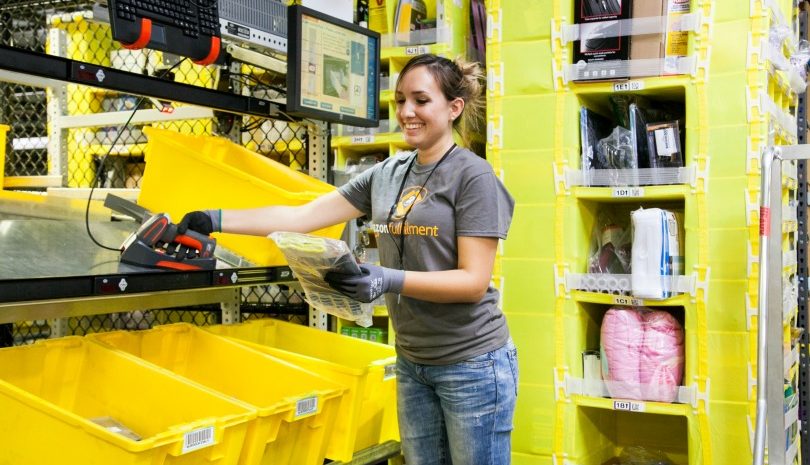Online retailers weigh cost, competition of selling on Amazon

Amazon last week confirmed plans to ramp up its retail offering Down Under.
In a statement published on the website, the e-commerce giant announced that Amazon Marketplace will be coming soon to Australia and invited local businesses to express their interest in setting up shop on the platform.
The news comes after months of speculation about the timeline and scope of Amazon’s arrival in Australia.
While specific details are still thin on the ground – no launch date had been given at the time of this writing – Amazon’s behaviour in other markets would indicate that Marketplace is just the first phase of a wider rollout, including Amazon Prime, Prime Pantry and AmazonFresh.
“The first step is for Amazon to find a fulfilment centre. After that, we can confirm what the full retail offering will look like exactly,” a spokesperson told IRW.
Up to now, Amazon’s local offering has been limited to Kindles, e-books and audiobooks, but when Marketplace launches, it will cover a much broader range of categories and offer products from third-party sellers as well as Amazon’s own brands.
While Amazon’s expansion is undoubtedly a game-changer for Australian retail, some in the industry say it’s not all bad news. There are also opportunities for retailers to grow their business domestically and internationally.
“Retailers will have a go”
Paul Greenberg, CEO of the National Online Retailers Association, cited Ebay as an example: “If it wasn’t for Ebay, there wouldn’t be a Deals Direct, Catch Group, or Kogan.com. They all had their start back in the early 2000s on Ebay.”
Greenberg said Ebay’s success may have even primed Australia’s biggest retailers for Amazon, as almost 70 of the country’s top 100 retailers by online volume already sell on Ebay.
“That’s a dramatic statistic and Ebay has worked hard to get big players on their platform. Now that these retailers have tasted the opportunity that marketplaces have given them, many will have a go on Amazon,” he said.
Unlike Ebay, however, Amazon also sells its own items on Marketplace, competing directly with retailers. Many third-party sellers say it’s all too easy for Amazon to identify their most successful products, launch its own label and undercut them on price.
But Greenberg thinks retailers may accept the risk in order to access FBA (Fulfilment by Amazon). This service lets retailers outsource the entire fulfilment process – warehousing, picking and packing, and delivery – to Amazon for a fee.
Experts say FBA is what makes Amazon’s unparalleled delivery offering possible, because the e-commerce giant can assign the right number of products to the right warehouse for the fastest delivery based on huge amounts of consumer data.
“Many retailers will be only too happy to see what capabilities Amazon can offer,” Greenberg suggested.
Amazon’s spokesperson could not confirm whether FBA will be available to sellers when Marketplace launches. However, Qing Yuan Zhou, venture partner at Goat Consulting, a US-based Amazon consulting firm that recently opened an office in Australia, thinks it is likely.
“My personal take is that FBA will be a part of [the launch]. The details of how they’ll execute it, I don’t know,” she told IRW.
Zhou said her company almost always recommends FBA to sellers (the alternative is FBM, or Fulfilment by Merchant).
“We advise our clients that they are likely to see sales go up by at least 20 per cent just by switching from FBM to FBA,” she said, citing the fact that FBA sellers are more likely to get a favourable page ranking and “win the buy box”, an add-to-cart shortcut.
In addition, only items from FBA sellers are eligible to be shipped with Amazon Prime. Customers tend to buy these items over similar products.
“It all depends on the fees”
Of course, FBA isn’t free, and some retailers say the cost is high enough to offset any gains in sales.
“We would consider selling on Amazon Marketplace, but it all depends on the fees they charge,” Tony Nash, CEO of Booktopia, told IRW.
“If it’s going to deliver us sales, and we could do it in a profitable way, we would. But the fees they currently charge make it cost prohibitive in a low margin industry like books.”
Amazon charges 15 per cent on every sale made through Marketplace. And while there’s no single fulfilment fee (Zhou said it depends on the weight of each item among other factors), retailers that use FBA can expect to pay somewhere between 25-30 per cent in total.
“Amazon has recently made changes to the structure such that it has increased the cost. But the cost structure is very complex, so it’s imperative that merchants have a strong understanding of it,” she said.
Nash said he wouldn’t consider FBA, since Booktopia has its own fulfilment centre, and suggested he could carry certain titles on Amazon to make the numbers add up.
“I would say the cost definitely adds to the bottom line pressure,” Zhou admitted.
“But the issue is when any brand is building a business, they shouldn’t just be looking at profit line. Even if a business is just breaking even, they may still want to be on Amazon for social proof.
“If I want to buy a pair of Bose headphones, I’ll look at the reviews on Amazon, even if I don’t buy it there.
“I’m not saying people should rely 100 per cent on Amazon, but they should have a presence just to stay relevant.”
A version of this story first appeared in Inside Retail Weekly issue 2137. To subscribe, click here.
Comment Manually
You must be logged in to post a comment.

No comments